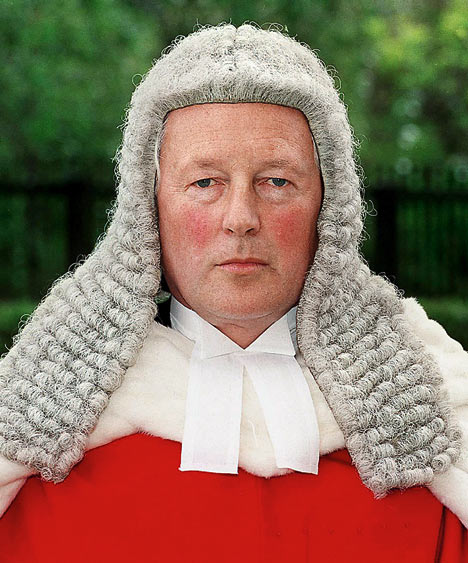
The main value of a trade mark is arguably its nature as an identifying factor for the goods or service to which it is applied. It can function as both an indicator of origin and also an indicator of other favourable aspects of a product, such as quality and good value. Because of this the mark can become the focus for the so called ‘goodwill’ built up in a product or a service, an integral part of this is the presentation of the product for sale. As such the trade mark owners will want to be able to control its method of distribution for example the type and quality of shop that stocks his products.
Section 9(1) of the Act provides that:
“the proprietor of a registered trade mark has exclusive rights in the trade mark which are infringed by use of the trade mark in the United Kingdom without his consent”
This would indicate that the trade mark owner is well within his rights to prevent his products being sold in places he views as not being commensurate with the quality of the product.
But when the products (and thus the trade mark) are genuine items (sourced from the rights holder) and not copies made by other manufacturers, the concept known as exhaustion of rights comes into play. Section 12 of the Act (article 7 of the Trade Mark Directive) states:
- A registered trade mark is not infringed by the use of the trade mark in relation to goods which have been put on the market in the European Economic Area under that trade mark by the proprietor or with his consent.
- Subsection (1) does not apply where there exist legitimate reasons for the proprietor to oppose further dealings in the goods (in particular, where the condition of the goods has been changed or impaired after they have been put on the market).
The principle of exhaustion of rights stems from the wider principles of competition law and freedom of goods and services as set out in the EC treaty. In general Articles 28, 29 and 30 prohibit the prevention of the free movement of goods or services in the EEA, Article 30 does though provide a get out where restrictions can be justified on special grounds, also Article 295 recognises the rights of intellectual property proprietors. Trade mark laws must be balanced with these free movement principles.
At a basic level if Trader A (the rights holder) puts his product on sale within the EEA his rights would be seen as being exhausted and he could not stop trader B from selling the same within a different country in the EEA. By putting the goods on the market under the trade mark somewhere in the EEA then the owner has exhausted his rights in the trade mark. As always in law there are exceptions to the rule, these are referred to in S12(2) of the Act with the following being widely accepted as the main reasons enabling a mark owner to prevent its products being resold by other traders:
- Where the goods are altered – this will often be the case where for example additions are made to a product in order for it to be compatible with the national market in question.
- Where the mark itself is altered – where for example the mark owner uses a slightly different mark depending on the country.
- Where the packaging of the goods is changed in whole or in part.
- Where the method of advertising used by the reseller is not in keeping with the value and status of the mark.
As stated above the principle of exhaustion is well established in Europe but confusion reigns as to its wider relevance. Prior to the passage of the directive, the question of international exhaustion was one decided by individual member states countries such as Germany, Austria and the Benelux countries all historically had international exhaustion. This had the affect that trade mark owners would not have been permitted to oppose the resale of products which had been put onto the market with their consent, any where in the world.
Through various cases the ECJ has ensured that trade mark owners rights are protected and are neither weakened or undermined . The first of these landmark cases is that of Silhouette . Draft versions of the trade mark directive did not feature the words “in the community” thus there was uncertainty as to whether ‘regional exhaustion’ or ‘international exhaustion’ was intended, even when the actual directive was released complete with the phrase “in the community” there was uncertainty as to whether this was a minimum level of exhaustion or required community exhaustion only and did not allow international exhaustion . This question was answered very clearly in Silhouette, in this case the ECJ held that:
“national rules providing for exhaustion of trade mark rights in respect of products put on the market outside the EEA under that mark by the proprietor or with its consent are contrary to Article 7(1) of the (Trade Mark Directive)”
This was at the time accepted as being consistent with the aims of the directive in terms of harmonising the laws and protecting rights holders. It had the effect that if genuine trade marked goods are put for sale outside of the EEA, any subsequent importation and sale of them within the EEA will amount to an infringement of the trade mark unless consent has been obtained from the rights holder. It removed any lingering doubt over whether or not individual member states could provide for exhaustion in their national law.
Unfortunately whilst the ECJ clarified one point i.e. the regional nature of exhaustion they also brought about a new point of confusion namely the issue of consent, i.e. what amounts to consent to import goods into the EEA. When is a trade mark owner deemed to have consented, is it an implied assumption or must it be expressed. This new issue was dealt with in the case of Sebago ,as per Silhouette the defendant argued that the importation of genuine products into the EEA did not affect the function of a trade mark as an indication of the origin and quality of the product . The Advocate General sympathised with this view but stated that the Trade Mark Directive clearly prevented international exhaustion. The ECJ held that: “for there to be consent within the meaning of Article 7(1) of that directive, such consent must relate to each individual item of the product in respect of which exhaustion is pleaded”
A trade mark owner cannot be deemed to have consented to the parallel importation of its branded goods from outside of the EEA just because it had itself sold the same goods within the EEA.
The biggest twist in this saga came in the UK Davidoff case. Laddie J dealt a blow to trade mark owners stating:
“Silhouette has bestowed on a trade mark owner a parasitic right to interfere with the distribution of goods which bears little or no relationship to the proper function of the trade mark right”
He went on to assert that where the proprietor:“Has agreed, expressly or otherwise to such entry, or he has, directly or otherwise, placed the goods in the hands of a third party under conditions which give the third party a right to distribute and onward sell them without restriction” He will be deemed to have impliedly consented. Explicit restrictions (according to Laddie J) must be imposed on the purchaser at the time of purchase.
The High Court held that Davidoff could not prevent the sale of goods in the United Kingdom if it had not expressly prohibited the sale of these goods in the United Kingdom when it first put the goods on the market. This case was referred to the ECJ for further ruling, it came up for consideration with the joined cases brought by Levi Strauss against Tesco and Costco . The ECJ’s decision in these cases shifted the position on parallel imports back in favour of the trade mark owners. It held the following:
- Implied consent of a rights holder who has placed his products on the market outside of the EEA to the subsequent sale of the same in the EEA, can only be found if the rights holder has renounced his right to oppose such marketing.
- The burden of proof is on the parallel importer to prove that the rights holder has consented.
- Consent cannot be automatically implied just because the rights holder has not informed purchasers of their opposition to such re-sale or because there is no statement on the product forbidding such re-sale or because there is no contractual restriction forbidding such re-sale.
- It matters not if the parallel importer has no awareness of the right holders objections to re-sale within the EEA.
It would appear that for now at least the gates of fortress Europe are shut to parallel imports, the cases of Silhouette, Sebago and Davidoff seem to have made certain of this. But doubts remain about exhaustion and it has been suggested that the mood is turning against trade mark proprietors and price differentials, with the increase in use of the internet the world is effectively becoming smaller and people have easy access to details of pricing in other countries, these consumers can see that they could buy products in for example China for a great deal less money. This will increase pressure on the legislators to change the existing laws. In fact the European Commission recently released a paper called “Possible abuses of trade mark rights within the EU in the context of Community exhaustion” presentations of this ascertains that there are no deficiencies in the current legal provisions to possible abuse of trade marks in the EU but the mere fact that the paper was commissioned suggests that questions remain. Even the Advocate General seemingly desires change, in both Silhouette and Sebago he affirmed that the ECJ cannot:
“Stand legislation on its head in order to achieve an objective, even were it to be considered desirable”
There have been suggestions that international exhaustion be provided only for certain products for example pharmaceuticals and sound recordings but according to the European Commission report of 1999 the actual price benefits to consumers would not be as high as one would imagine an estimate of only 2%. For now though it appears that the future of exhaustion is left to the politicians, out of the 16 member states 8 are known to be in favour of international exhaustion (the UK being one of them) 5 are against and 3 are undecided . Whilst a majority is adequate to amend the directive a unanimous vote would be necessary to amend the regulation upon which the directive are based, changing the directive without changing the regulation would lead to much confusion and as such is never likely to happen. But those member states in favour of international exhaustion are continuing to press the commission for a way forward.
















